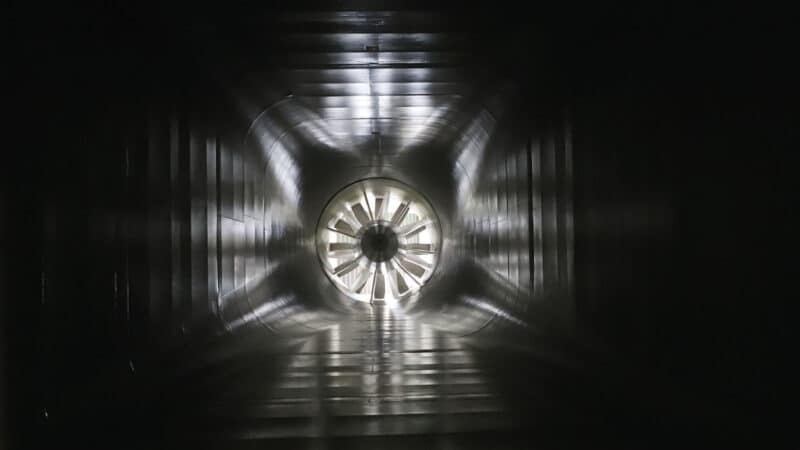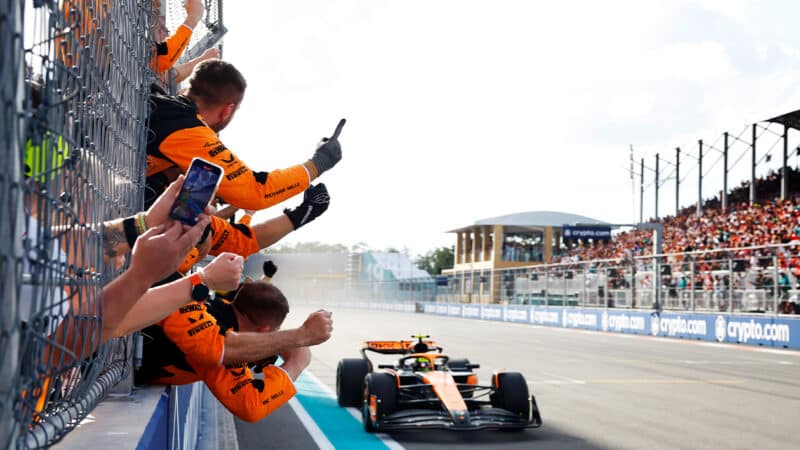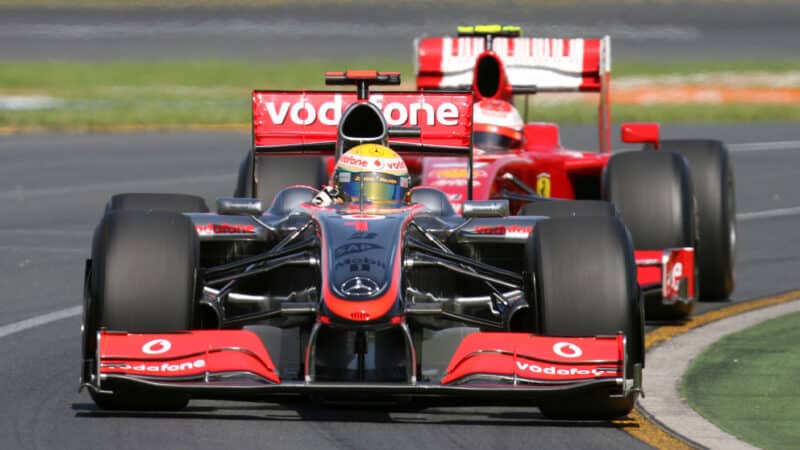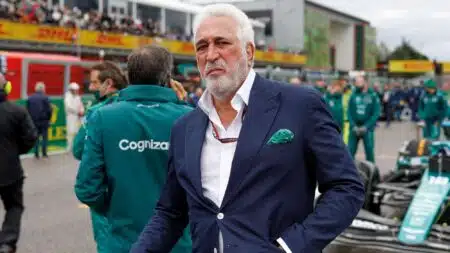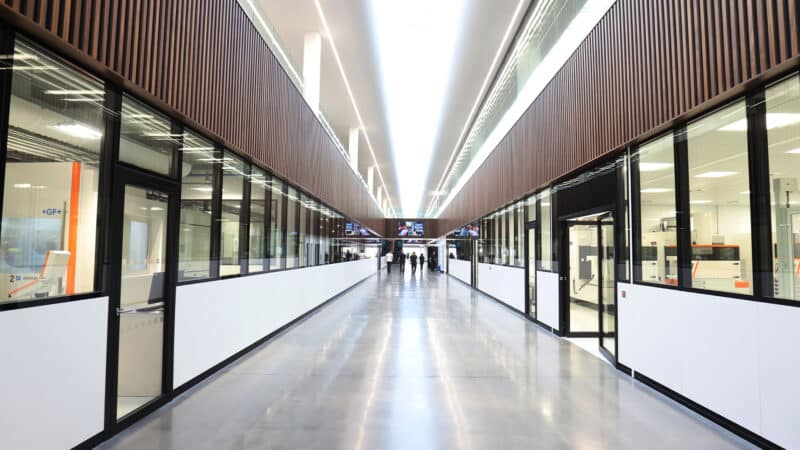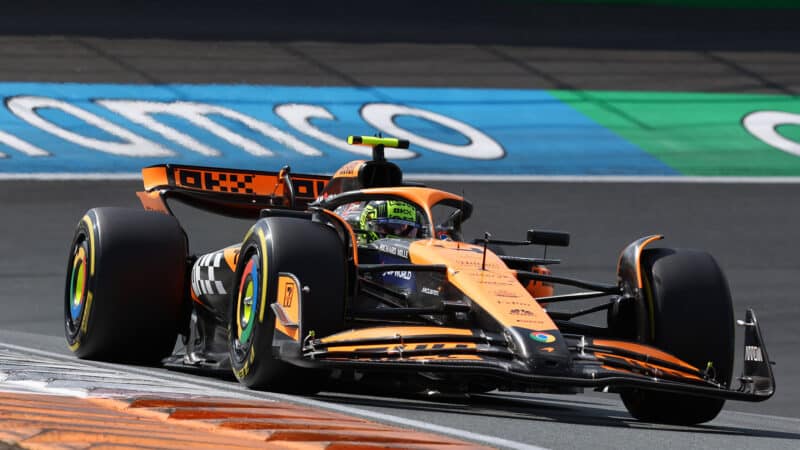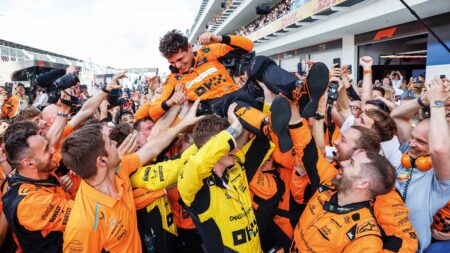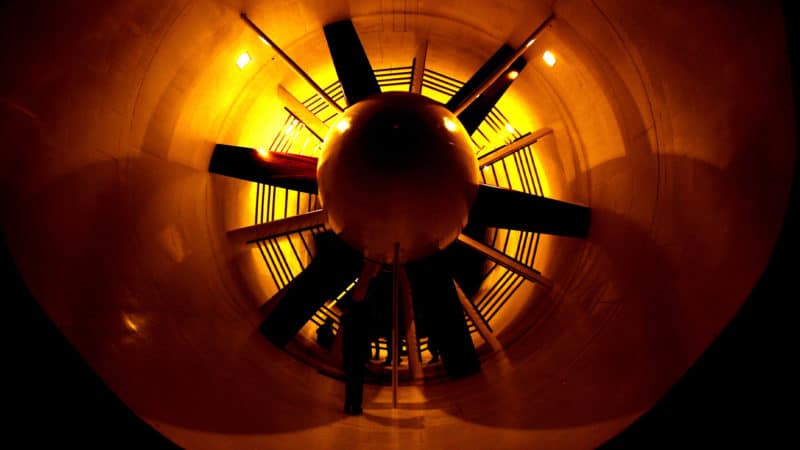“And there just wasn’t the gap between the front wing width and the tunnel width, and the same in our case between the tunnel height and the top of the rear wing.”
McLaren had a disastrous start to 2009 with the MP4-24, admittedly in a year when Brawn’s double diffuser moved the goalpost. But by the middle of the season the silver car was a race winner.
“The front wing trend then, with the way the front wing worked, was you had to massively ‘out sweep’,” says Lowe. “We could put such a wing in our tunnel and it looked shit. So we were found out with that.
“So as the trend showed, the quick guys had this outswept front wing endplate. We had to copy that blindly.
“It didn’t look good in the tunnel, but we just made it and put it on the car, and it worked. So we always thought we had to develop blindly against the tunnel’s numbers. So that was part of the recovery.
“And that’s why after that McLaren went and rented the tunnel in Toyota eventually, and we stopped using our own tunnel, because it was just too small. And Ferrari did a big upgrade on their tunnel, likewise.”
Aside from McLaren’s new toy there are seven other tunnels currently operated by F1 teams, with Mercedes in Brackley also serving Aston Martin, and the Red Bull facility in Bedford shared with RB/VCARB.
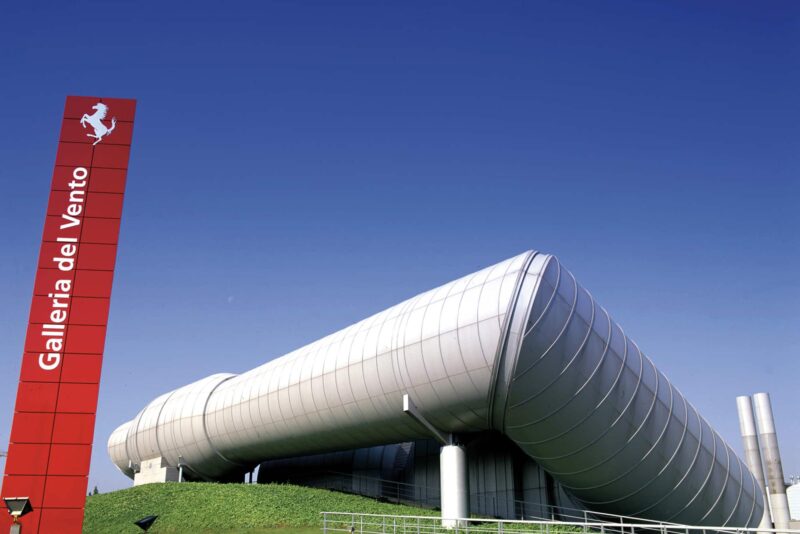
Ferrari’s wind tunnel in Maranello
All have been in use for a while, albeit subject to the occasional upgrade or complete revamp – for example Ferrari’s was substantially renewed around 2017, and Alpine’s had a makeover in 2018.
Typically tunnels also get the equivalent of an MOT service during the summer break, but major works are always disruptive, because it would mean either stopping the tunnel programme or temporarily taking it elsewhere. Which is why in general teams have upgraded their existing kit, as the opportunity to start completely fresh is so rare.
McLaren was able to do just that because it had been using Cologne for years and thus could take its time to do a complete rebuild of its old one in Woking.
Aston Martin goes all-out on new factory and wind tunnel – as Red Bull struggles
Meanwhile Aston Martin had the space on its new Silverstone site to create something brand spanking new, and with no compromises, while it continued to use the Mercedes tunnel. The new one should be ready to accept the 2026 model when aero testing for the new regulations is allowed from January 1.
Aston won’t be the only team to benefit from starting with a clean sheet of paper on an empty site, as Red Bull will have a new tunnel at some stage in 2026 – and it can’t come soon enough for a team that is currently on the ropes.
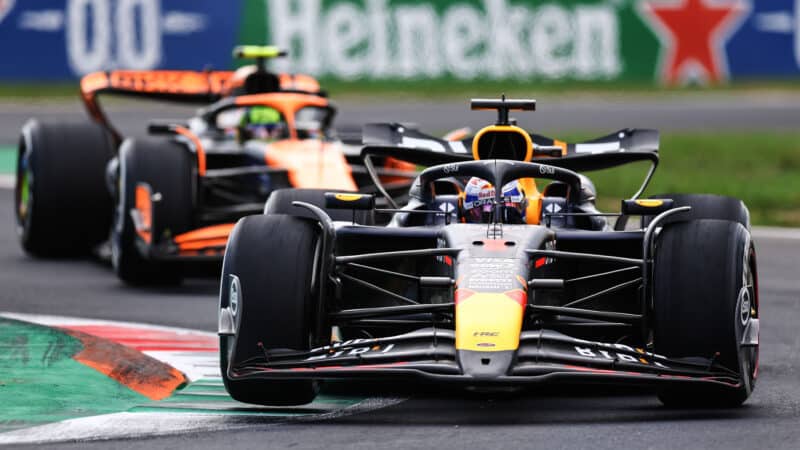
Red Bull’s on the ropes – a lack of data correlation isn’t helping
Red Bull
In the space of a few months RBR has gone from dominating races to struggling – and a key issue is a lack of correlation from tunnel to track, as team boss Christian Horner made clear after a poor race in Monza last weekend.
“I think you have to pick your tools,” he said. “CFD and wind tunnel data, obviously it’s not unusual that when something’s not working on the car, you end up with a different reading from your simulation tools, and they don’t converge.
“Then you get three sets of data. You get CFD, you get wind tunnel, and you get track. Obviously, the one that really counts is the track data, but to develop it, it’s like telling the time with three different watches.
